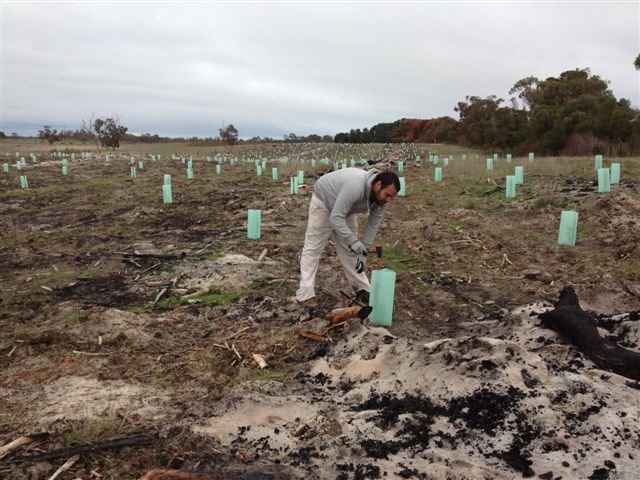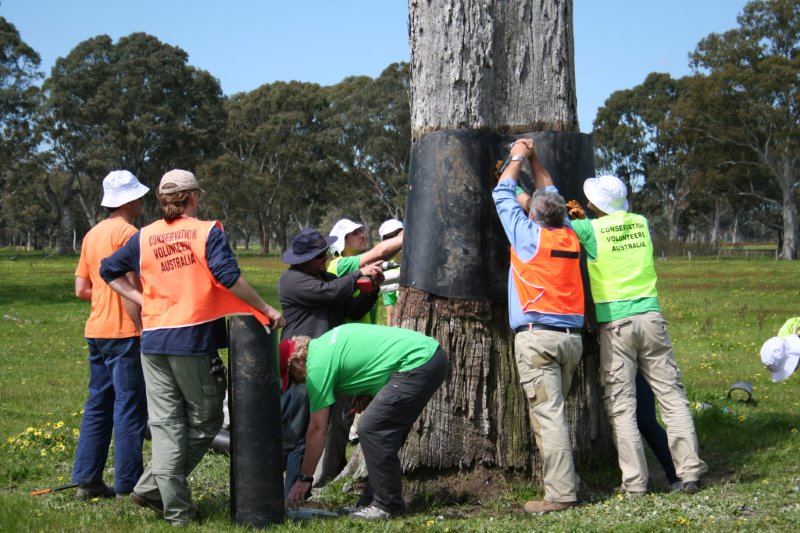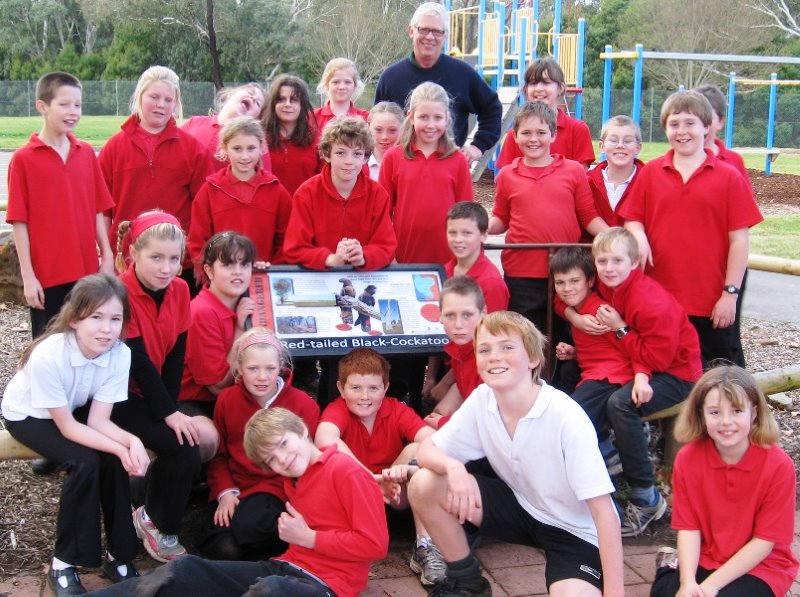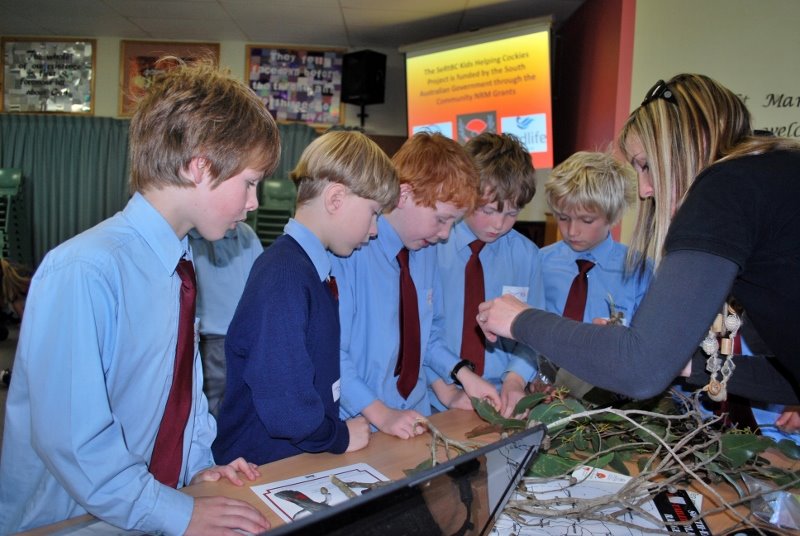 The main objective of the recovery program is to deliver and implement high priority actions from the National Recovery Plan across the range to ensure the long-term survival of a healthy population of South-eastern Red-tailed Black-Cockatoos. This program has a strong community engagement and education focus, using the South-eastern Red-tailed Black-Cockatoo as a ‘flagship’ to help improve and protect stringybark and buloke habitats utilised by the cockatoo and other threatened fauna/flora.
The main objective of the recovery program is to deliver and implement high priority actions from the National Recovery Plan across the range to ensure the long-term survival of a healthy population of South-eastern Red-tailed Black-Cockatoos. This program has a strong community engagement and education focus, using the South-eastern Red-tailed Black-Cockatoo as a ‘flagship’ to help improve and protect stringybark and buloke habitats utilised by the cockatoo and other threatened fauna/flora.Our activities can be classified into four broad categories:
1. Population Monitoring
2. Threat Abatement & Monitoring (including Habitat Protection/Restoration Projects),
3. Community Education & Engagement, and
4. Research.
Population Monitoring - this includes coordination and implementation of the annual count and flock counts to determine patterns of habitat use, and use of feeding resources, and to measure breeding success.
 Monitoring and mitigating threats – supporting organisations to deliver large landscape scale habitat and restoration projects; maintaining artificial nest sites, identifying and protecting new nest sites, reducing the impact of wildfire and prescribed burns on food productivity, monitoring fruiting patterns as part of a long-term phenology study to identify areas of importance and develop re-vegetation prescriptions; assisting schools to establish school nurseries to grow stringybark for habitat restoration projects; and provision of advice on native vegetation clearance applications and appropriate offsets.
Monitoring and mitigating threats – supporting organisations to deliver large landscape scale habitat and restoration projects; maintaining artificial nest sites, identifying and protecting new nest sites, reducing the impact of wildfire and prescribed burns on food productivity, monitoring fruiting patterns as part of a long-term phenology study to identify areas of importance and develop re-vegetation prescriptions; assisting schools to establish school nurseries to grow stringybark for habitat restoration projects; and provision of advice on native vegetation clearance applications and appropriate offsets.
Community education, engagement and capacity building - to increase knowledge and participation in activities to recover and manage the South-eastern Red-tailed Black-Cockatoo across its range. This includes maintaining a Red-tail website, a 1800 number for reporting sightings, bi-annual production of the Red-tail Newsletter, production and distribution of fact-sheets, booklets, and posters to increase knowledge and awareness of the cockatoo and its key stringybark, buloke and gum habitats; attendance at field day and community events to disseminate information; and education and training to agency staff, community groups, schools and farmers about how to identify, protect and improve Red-tail habitat across the range.
The Recovery Project also has a Facebook page which is regularly updated with the latest developments from the program.

Research - the project also seeks to identify scientific research priorities and projects to address and inform management, particularly in relation to:
a. demographic trends,
b. modelling nesting habitat suitability,
c. relative value of paddock trees,
d. restoration requirements needed to ensure sufficient nesting habitat in the future,
e. effectiveness of current offset methods to achieve sufficient feeding and nesting habitat,
f. strategic fire management, and
g. the impacts of pathogens and pests of food tree species.

The Recovery Program is currently managed by BirdLife Australia (formerly Birds Australia) and is funded by the Australian Government's National Landcare Program with support from Natural Resources South East, Wimmera CMA and Glenelg Hopkins CMA. The program is also supported by partner organisations inlcuding Trees for Life, Zoos SA, Greening Australia, the Department of Environment and Water and the Department of Environment, Land, Water and Planning. The project employs a 0.8FTE project coordinator, Kelsey Bennett, to coordinate and manage the recovery program. Richard Hill and Bronwyn Perryman are also contracted to assist with the delivery of particular activities undertaken as part of this project. The project also relies heavily on the help and support of many volunteers, in particular Evan Roberts who assists with nest inspections, the annual count and field day events. Importantly, the Recovery Program relies on many partners for success. Recent significant contributions have been made by the Kowree Farm Tree Group restoring Buloke in the Wimmera, the Adelaide Zoo 'Cockies helping Cockies helping Cockies' project restoring Desert Stringybark in the Lucindale and Naracoorte areas, Conservation Volunteers through the 'Wild Futures' program, Trust for Nature land protection and of course, the continued contributions of over 170 community volunteers annually. 
Next page: Achievements
.png)

